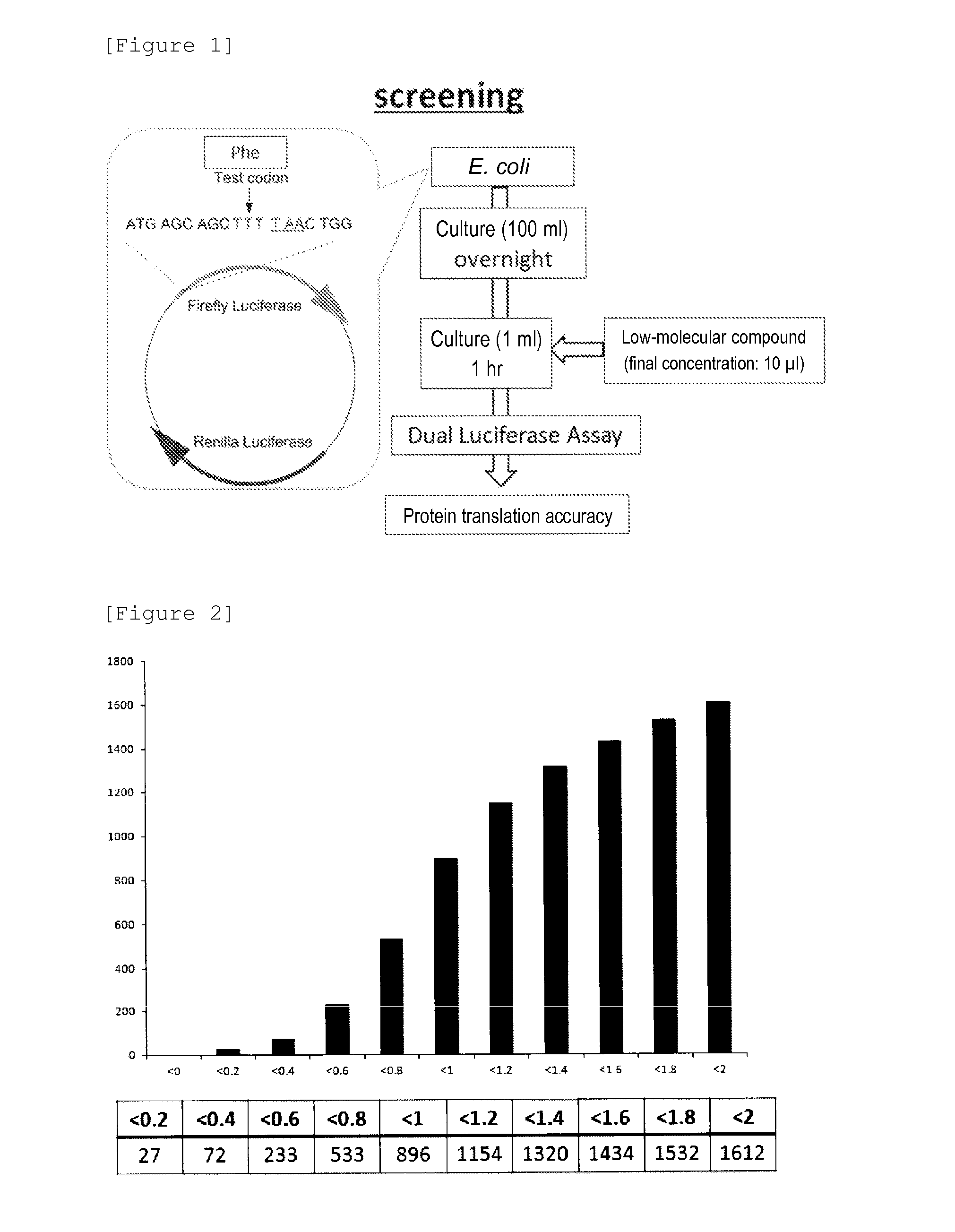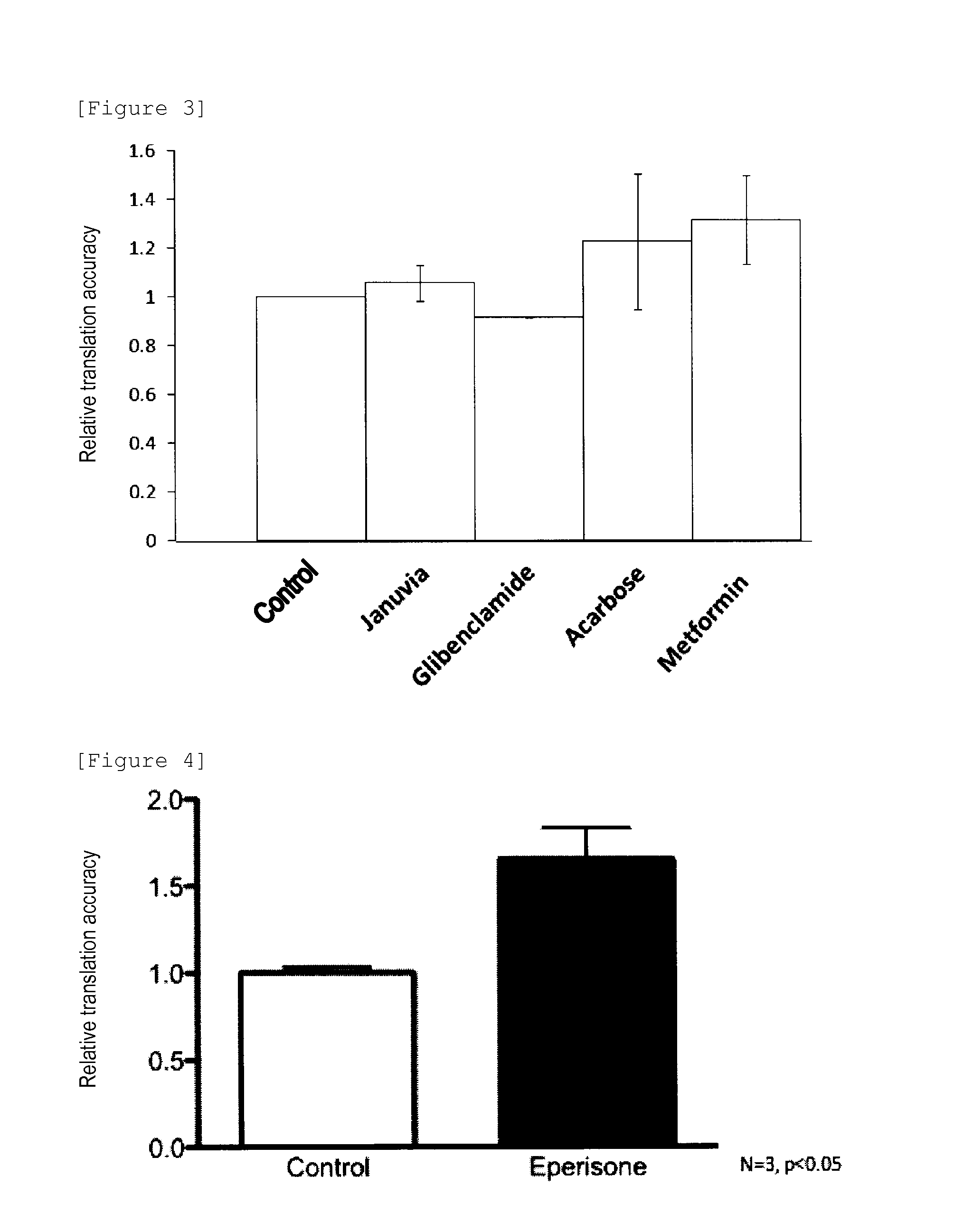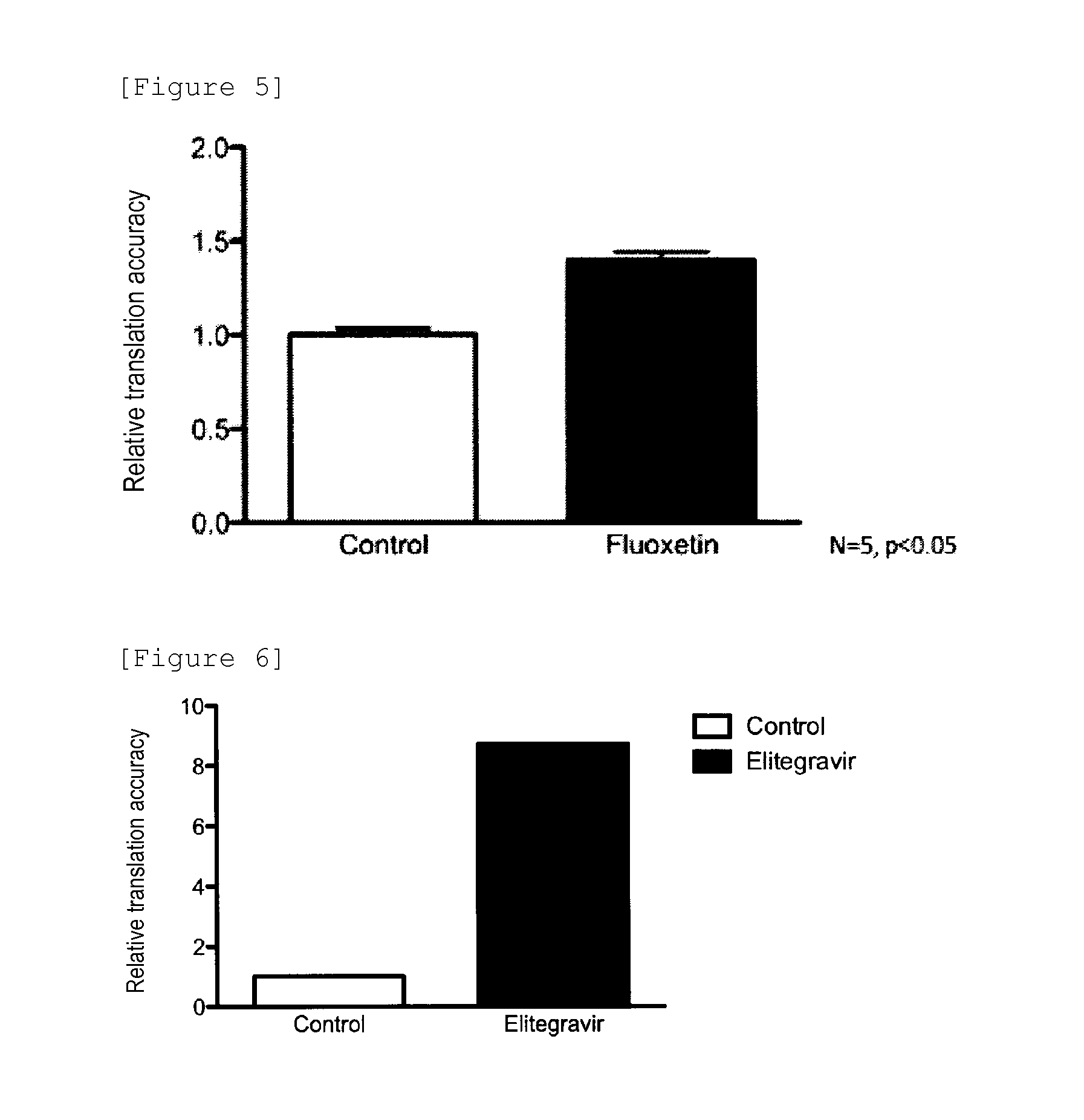Therapeutic Agent for Type 2 Diabetes
a type 2 diabetes and therapeutic agent technology, applied in the field of type 2 diabetes patient therapy agent, can solve the problems of inability to produce abnormal insulin, poor long-term safety, and inability to achieve long-term administration, so as to accelerate only insulin secretion, improve translation accuracy, and reduce the ability to secrete insulin
- Summary
- Abstract
- Description
- Claims
- Application Information
AI Technical Summary
Benefits of technology
Problems solved by technology
Method used
Image
Examples
production example 1
Synthesis of Compound (IV-1)
[0294]
[0295]To 3-chloro-1-phenyl-1-propanone (253 mg, 1.5 mmol) in acetone (20 mL), anhydrous potassium carbonate (414 mg, 3 mmol) was added, and the mixture was stirred at room temperature for 1 hour. To the reaction solution, a solution of 4-piperidinopiperidine (1.5 mmol) in acetone (10 mL) was then added, and the mixture was reacted for 20 hours by heating to 45 to 47° C. The completion of the reaction was confirmed by thin-layer chromatography, and the solvent was then distilled off under reduced pressure. To the residue, water (20 ml) was added. The aqueous layer was subjected to extraction with ethyl acetate (50 mL) three times. The organic layer was washed with water and saline and then dried over anhydrous magnesium sulfate. After filtration, the solvent was distilled off under reduced pressure to obtain the title compound as a pale yellow solid at a yield of 77%.
[0296]1H NMR (300 MHz, CDCl3) δ 2.24-2.33 (m, 5H), 2.50-2.61 (m, 10H), 2.82-2.92 (m,...
production example 2
Synthesis of Compound (IV-2)
[0298]
[0299]Compound (IV-2) was obtained as a white solid at a yield of 79% in the same way as in Production Example 1 except that 1-methyl-4-[1-(4-piperidyl)-4-piperidyl]piperazine was used instead of 4-piperidinopiperidine.
[0300]1H NMR (300 MHz, CDCl3) δ 1.59-1.63 (m, 5H), 1.76-1.86 (m, 4H), 2.03 (t, J=12 Hz, 2H), 2.27 (s, 3H), 2.47-2.62 (m, 11H), 2.80 (t, J=12 Hz, 3H), 2.90 (t, 15 Hz, 3H), 3.19 (t, J=13 Hz, 2H), 7.47 (t, J=8.0 Hz, 2H), 7.57 (t, J=7.2 Hz, 1H), 7.96 (d, J=7.3 Hz, 2H)
[0301]MS (TOF Mass): m / z calcd for C24H38N4O (M+1) 399.31. found: 399.31.
production example 3
Synthesis of Compound (IV-3)
[0302]
[0303]Compound (IV-3) was obtained as a yellow oil at a yield of 86% in the same way as in Production Example 1 except that 1-(2-methoxyethyl)piperazine was used instead of 4-piperidinopiperidine.
[0304]1H NMR (300 MHz, CDCl3) δ 2.12-2.15 (m, 10H), 2.81-2.83 (m, 2H), 3.30 (s, 3H), 3.45-3.50 (m, 2H), 7.31-7.48 (m, 2H)
[0305]MS (TOF Mass): m / z calcd for C16H24N2O2 (M+1) 277.19. found: 277.18.
PUM
| Property | Measurement | Unit |
|---|---|---|
| pH | aaaaa | aaaaa |
| frequency | aaaaa | aaaaa |
| resistance | aaaaa | aaaaa |
Abstract
Description
Claims
Application Information
 Login to view more
Login to view more - R&D Engineer
- R&D Manager
- IP Professional
- Industry Leading Data Capabilities
- Powerful AI technology
- Patent DNA Extraction
Browse by: Latest US Patents, China's latest patents, Technical Efficacy Thesaurus, Application Domain, Technology Topic.
© 2024 PatSnap. All rights reserved.Legal|Privacy policy|Modern Slavery Act Transparency Statement|Sitemap



